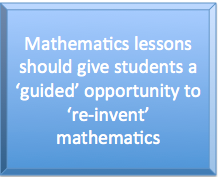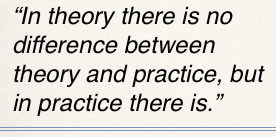 Realistic Mathematics Education (RME) is an approach to mathematics education developed in The Netherlands by the math educators of the Freudenthal Institute. The development of what is now known as RME started around 1970. The foundations were laid by Hans Freudenthal and his colleagues. Hans Freudenthal stressed the idea of mathematics as a human activity and therefore he proposed that the teaching and learning of mathematics must be connected to reality, stay close to children’s experience and be relevant to society, in order to be of human value. Mathematics lessons according to Freudenthal should give students the ‘guided’ opportunity to ‘re-invent’ mathematics by doing it; the focal point should not be on mathematics as a closed system but on the activity, on the process of mathematization.
Realistic Mathematics Education (RME) is an approach to mathematics education developed in The Netherlands by the math educators of the Freudenthal Institute. The development of what is now known as RME started around 1970. The foundations were laid by Hans Freudenthal and his colleagues. Hans Freudenthal stressed the idea of mathematics as a human activity and therefore he proposed that the teaching and learning of mathematics must be connected to reality, stay close to children’s experience and be relevant to society, in order to be of human value. Mathematics lessons according to Freudenthal should give students the ‘guided’ opportunity to ‘re-invent’ mathematics by doing it; the focal point should not be on mathematics as a closed system but on the activity, on the process of mathematization.
According to Van den Heuvel-Panhuizen, the reason why the Dutch reform of mathematics education was called ‘realistic’ is not just because of its connection with the real world, but is related to the emphasis that RME puts on offering the students problem situations which they can imagine. The Dutch translation of ‘to imagine’ is ‘zich REALISEren.’ It is this emphasis on making something real in your mind, that gave RME its name. For the problems presented to the students, this means that the context can be one from the real world but this is not always necessary.
Below is a list of principles each reflecting a part of the identity of RME identified by Heuvel-Panhuizen.
1. Activity principle
The idea of mathematization clearly refers to the concept of mathematics as an activity which, according to Freudenthal (1971, 1973), can best be learned by doing (see also Treffers, 1978, 1987). The students, instead of being receivers of ready-made mathematics, are treated as active participants in the educational process, in which they develop all sorts of mathematical tools and insights by themselves.
2. Reality principle
As in most approaches to mathematics education, RME aims at enabling students to apply mathematics. The overall goal of mathematics education is that students must be able to use their mathematical understanding and tools to solve problems. This implies that they must learn ‘mathematics so as to be useful’ (see Freudenthal, 1968).
3. Level principle
Learning mathematics means that students pass through various levels of understanding: from the ability to invent informal context-related solutions, to the creation of various levels of short cuts and schematizations, to the acquisition of insight into the underlying principles and the discernment of even broader relationships.
4. Inter-twinement principle
It is also characteristic of RME that mathematics, as a school subject, is not split into distinctive learning strands. From a deeper mathematical perspective, the chapters within mathematics cannot be separated. Moreover, solving rich context problems often means that you have to apply a broad range of mathematical tools and understandings.
5. Interaction principle
Within RME, the learning of mathematics is considered as a social activity. Education should offer students opportunities to share their strategies and inventions with each other. By listening to what others find out and discussing these findings, the students can get ideas for improving their strategies. Moreover, the interaction can evoke reflection, which enables the students to reach a higher level of understanding.
6. Guidance principle
One of Freudenthal’s key principles for mathematics education is that it should give students a ‘guided’ opportunity to ‘re-invent’ mathematics. This implies that, in RME, both the teachers and the educational programs have a crucial role in how students acquire knowledge. They steer the learning process, but not in a fixed way by demonstrating what the students have to learn. This would be in conflict with the activity principle and would lead to pseudo- understanding. Instead, the students need room to construct mathematical insights and tools by themselves. In order to reach this desired state, the teachers have to provide the students with a learning environment in which the constructing process can emerge.
Reference:
Van den Heuvel-Panhuizen, M. (2000). Mathematics education in the Netherlands: A guided tour. Freudenthal Institute Cd-rom for ICME9. Utrecht: Utrecht University.
